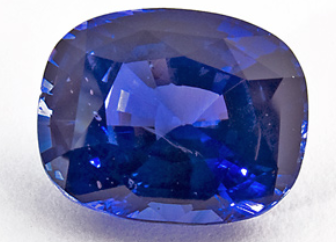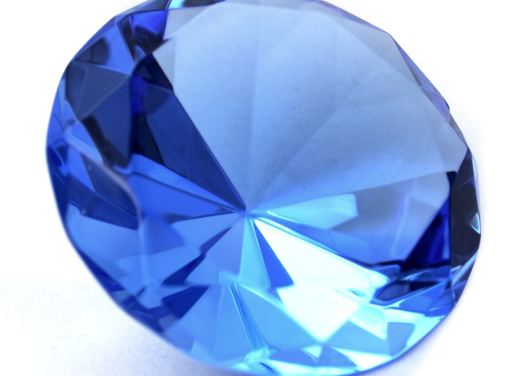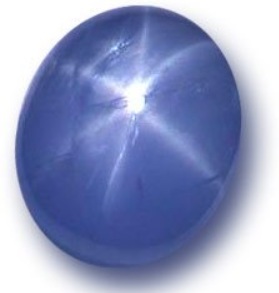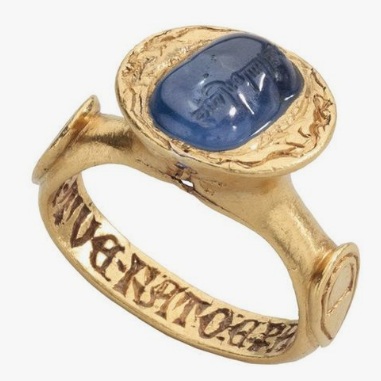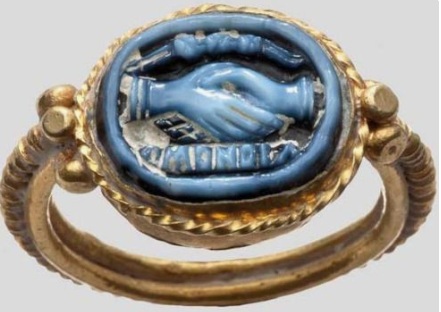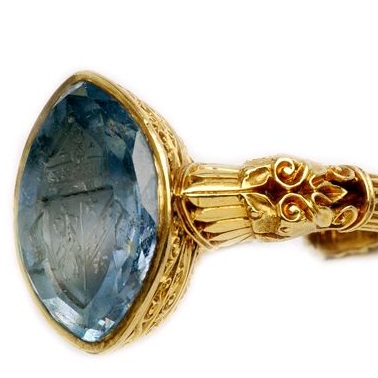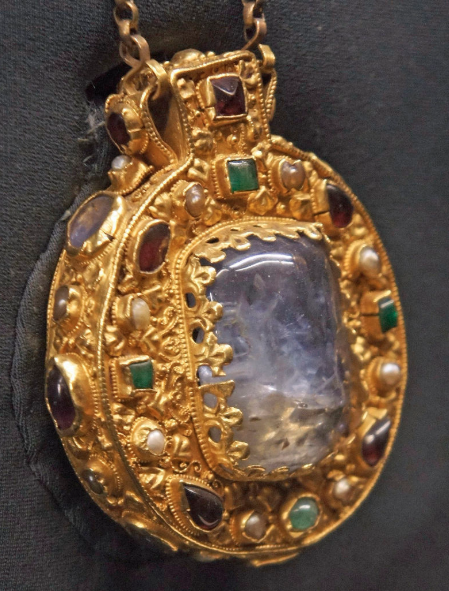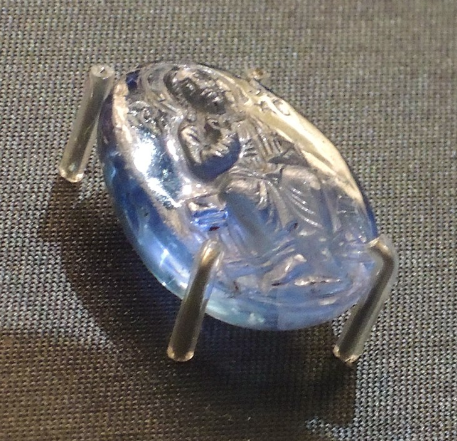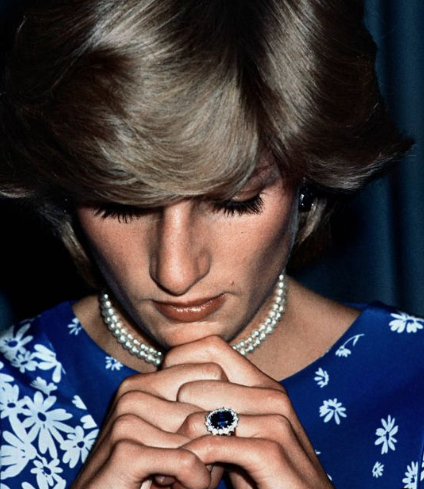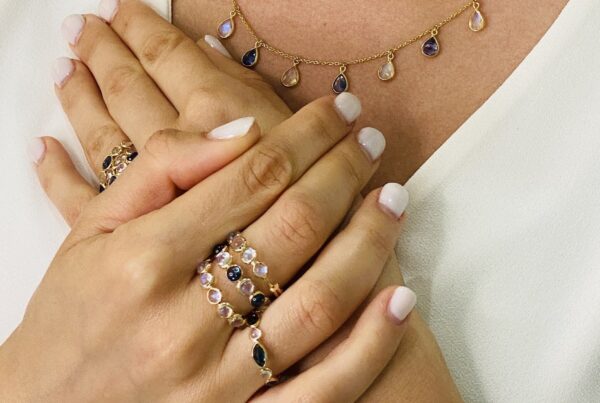Throughout history, the beautiful blue sapphire gemstone has been treasured not only for its exceptional colors, but also for its purported mystical powers. As a symbol of purity and divine favor, royalty and religious leaders have prized this gem for its spiritual and physical protection, and for its ability to provide insight into matters of heaven and earth. Sapphire has been credited with bestowing nobility, truth, sincerity, faithfulness, devotion, spiritual enlightenment, and wisdom to its wearers. In contemporary times, September’s birthstone and 45th wedding anniversary gem is still cherished for its associations with devotion and faithfulness, as well as its exceptional beauty. Keep reading to learn more about the mystical blue sapphire.
Rulers in ancient Greece and Rome wore blue sapphire to protect them from envy and harm, and to gain clarity and insight from the spiritual world. Pythia, the famous Oracle of Delphi, wore precious blue sapphire jewels when consulting her oracles to help her interpret their revelations. Sapphire was also believed to be favored by the god Apollo. Those paying homage to him often wore blue sapphire to gain favor for their prayers. Classical Greek author Aristophanes believed that the source of Helen of Troy’s passionate hold over Menelaus and Paris came from the magical powers of her magnificent star sapphire.
Star Sapphire
Ancient Persians believed that the earth was held cradled in the center of a giant sapphire pedestal whose reflection colored the sky blue. As the earth moved and shifted its position, tiny pieces of the pedestal broke off. These pieces fell and scattered across the earth for mankind to find.
In Hindu mythology, a magical wish granting tree named the Kalpavriksha lived on the earth. Also known as the Tree of Life, this magical tree bore ruby gems as its fruit, had a dazzling diamond trunk, and was bound by sapphire roots that reached deep into the ground. When mankind abused the magic of the tree by wishing for things to harm one another, Indra, the King of the Highest Heavens, ripped the tree from the earth and carried it to be replanted in heaven.
In early history in India, blue sapphire was worn as a talisman to ward off evil and to guide travelers. Believed to provide access to the spiritual world, the gem was used as an aid in astral projection, telepathy, and clairvoyance. Witches and necromancers used sapphire to influence the spirits and to help them commune with the dead.
From biblical times, Abrahamic beliefs held that that the ten commandments given to Moses were written on tablets of sapphire. The bible tells about King Solomon’s mysterious blue sapphire ring. Known as the “Seal of Solomon,” this powerful ring gave him the ability to command demons and to speak to animals.
From the early Middle Ages of European history, blue sapphire was considered a symbol heaven and God’s promise eternal salvation. In the 12th Century, the Roman Catholic Church considered blue sapphire to be a sacred stone and a symbol of devotion to God. It was thought to help promote a life of sincerity and serenity, and was associated with chastity, piety, and repentance. It was at this time that is became used widely in ecclesiastical jewelry.
Emperor Charlemagne, who united the majority of western and central Europe, was known for his love of blue sapphires. He wore a sacred golden amulet made with two large sapphires which sandwiched the hair of the Virgin Mary between them. Although this amulet was buried with the Emperor in 814 AD, Emperor Otto III reopened the tomb in 1000 AD and awarded the amulet to the Aachen cathedral treasury. This prized relic eventually found its way into the possession of Josephine de Beauharnais, wife of Napoleon Bonaparte. Later, after changing several hands, the hair of Mary was replaced with a fragment of the True Cross. The talisman is now kept in Rheims, France, in the Palace of Tau.
Talisman of Charlemagne
In the Middle Ages, sapphires became prized for their healing powers, especially for diseases of the eyes and to protect against poisoning. When ground into a powder, sapphire was used as a medicinal aid for colic, rheumatism, cancer, certain mental illnesses, burns, hearing issues, blood-related problems, inflammation, fevers, sore throats, headaches, nightmares.
During the Renaissance, the Holy Roman Emperor Charles V wore a sapphire ring which he used to touch people’s eyes to cure them of diseases. Ivan the Terrible of Russia (1530-1584) believed that wearing sapphire would strengthen the heart, give courage to the wearer, and refresh and sharpen eyesight.
The Krasinski Sapphire from 15th Century Russian Crown. (Double-faced sapphire icon-cameo with Christ enthroned and Golgotha’s Cross.)
For centuries, blue sapphire has also been associated with royalty, romantic love, fidelity, and romantic devotion. In 1981, Prince Charles of England give a stunning 12 carat oval-cut Ceylon (Sri Lanka) sapphire engagement ring to Lady Diana Spencer. Surprisingly, this ring was not custom made for Lady Diana! Although inspired by a sapphire and diamond brooch given to Queen Victoria by Prince Albert in 1840, this ring was not even a one-of-a-kind piece! Prince Charles bought it straight “from the case.” Princess Diana died in 1997 in a tragic car accident.
Princess Diana’s Engagement Ring
In 2010, Prince William of England gave his fiancé, Kate Middleton, his mother’s sapphire engagement ring. He said he wanted to honor his mother’s memory, and it was a way to keep her close to his family.
Today, blue sapphire is the most popular blue colored gemstone throughout the world.
